|
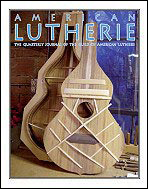 |
American Lutherie #102
Summer 2010 |
This issue’s cover shows the koa top and body assembly of a Weissenborn-style guitar by John Calkin. |
|
|
|
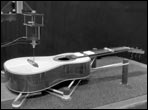 |
Practical Acoustics by Michael Cone from his 2008 GAL Convention lecture
Michael Cone has been a GAL member from the very beginning, and he's made a lot of guitars the old-fashioned way. Now, after a career break to work with computers and robots, he's back to describe his latest setup for analyzing the motions of a vibrating guitar in real time. Find a wolf tone in a minute with your finger! |
|
 |
Meet the Maker: James Ham by Roger Alan Skipper
Canadian luthier James Ham put in a lot of years as a repairman before making a bass viol for Gary Karr in 1994. Since then he's been designing and building innovative basses and cellos. |
|
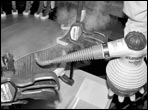 |
Activating Hide Glue with Steam by James Ham
You know those steam-cleaner gizmos that they sell on late-night TV between acts of Charles Bronson movies? Turns out they are actually good for something: gluing the backs on double basses. |
|
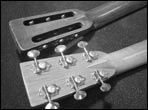 |
Recreating the Vintage Martin Peghead Joint by John Greven and Charles Freeborn
That little diamond-shaped thing on the back of a Martin peghead is a vestige of what was once a piece of functional joinery. Most of us knew that. But you may still be surprised to see how that joint really works, and the woodworking required to make it. |
|
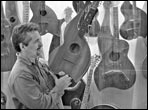 |
Meet the Collector: Gregg Miner by Kathy Wingert
He's been the guy who plays “Memories” from “Cats” on a concert harp in a restaurant. He's been a successful dealer in animation art. But now he's been elected Pope. Pope, that is, of the harp guitar. He collects them and has devoted a lot of time, effort, and scholarship to their history and taxonomy. |
|
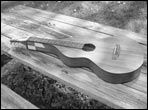 |
Making a Weissenborn-style Guitar by John Calkin
Calkin asserts that an aspiring guitar maker should start by making a dulicmer, and then, before making a standard guitar, build a Weissenborn-style lap steel. He guides us through the Hawaiian in this issue, in his characteristically iconolcastic and no-nonsense manner. |
|
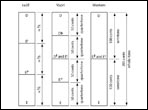 |
Comparing the Iranian Radif Musical Scale to the Western Scale by Nasser Shirazi
The equal-tempered chromatic fret arrangement that we normally use on guitars is not axiomatic. It's not an absolute truth, but just one solution to the problem of making musical sounds. Here's a very different one with centuries of history behind it. |
|
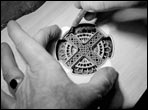 |
A Reinterpretation of a Baroque Soundhole Rose by Michael McCarten
McCarten looked at the traditional “wedding cake” parchment rose of a Baroque guitar, and started thinking about what other combinations of inlays, chip carving, purfling, and layering could make an attractive ornament for a soundhole. |
|
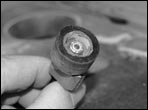 |
It Worked for Me by Greg Nelson and Mark Roberts
Modify a pattern-following router bit to have exactly the bearing diameter that you want. Mount a work light on your miniature router. |
|
Reviews: The Responsive Guitar and Making the Responsive Guitar by Ervin Somogyi reviewed by Roger Alan Skipper and Michael Sanden
Somogyi's book is a big, expensive, ambitious project. It's worthy of a big, thoughtful review. Here it is. |
|
Lutherie Curmudgeon by John Calkin
The Curmudgeon casts a skeptical eye on artist endorsements. Play the game and give guitars away to people who can easily afford them? Or stand up for yourself and get paid for your time and talent? |
|
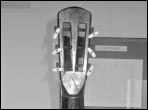 |
Questions edited by R.M. Mottola
Did Stradivari use Douglas fir? What's the best way to cut nut slots? How do you make a classical baritone guitar? How beefy does a 12-string really need to be? This guitar (pictured) was recently donated to a French museum; what is it? |
|
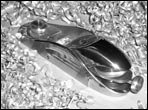 |
Product Reviews by James Condino
Condino tries out a Veritas NX60 Premium Block Plane. Loves it. |
Web Extras |
Top of Page |
|












